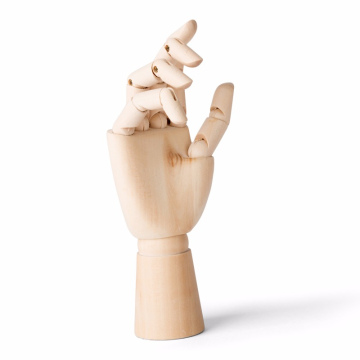The Origins of Ramen
Discover the rich history of ramen, tracing its origins from Chinese noodle dishes to the beloved Japanese staple it is today. Explore the regional varieties of ramen across Japan, including tonkotsu, shoyu, and miso ramen, each with its unique flavors and traditions. Learn about the cultural significance of ramen in Japanese dining, and gain tips for enjoying authentic ramen experiences, whether in Japan or at home. Dive into the world of ramen and savor the diverse interpretations of this iconic dish.
Beef Teppanyaki: The Art of Japanese Grilled Steak
A Theatrical Culinary Experience
Beef teppanyaki is more than just a dish—it is a culinary performance that combines precise cooking techniques, high-quality ingredients, and an engaging dining experience. Originating in Japan, teppanyaki-style cooking showcases the art of grilling steak to perfection on a flat iron griddle, allowing diners to witness the skillful preparation firsthand.
From the sizzling aroma of seared beef to the expert knife work of the chef, every aspect of beef teppanyaki reflects the essence of Japanese cuisine: simplicity, precision, and appreciation for high-quality ingredients.
The History of Teppanyaki
The word "teppanyaki" (鉄板焼き) comes from "teppan" (iron plate) and "yaki" (grill or cook), referring to the method of cooking ingredients on a large, flat griddle. While this style of cooking has been practiced in Japan for centuries, modern teppanyaki dining as we know it today originated in 1945 with the opening of Misono, a restaurant in Kobe.
Misono introduced the concept of entertaining, Western-style grilling, where chefs would cook in front of customers while engaging them with dazzling knife skills, flipping ingredients, and executing precise grilling techniques. The interactive nature of teppanyaki quickly gained popularity among foreign visitors, and by the mid-20th century, teppanyaki restaurants had spread beyond Japan, especially to the United States and other parts of the world.
Today, beef teppanyaki remains one of the most celebrated Japanese steakhouse experiences, blending traditional Japanese culinary values with a modern, engaging presentation.
Selecting the Perfect Beef for Teppanyaki
Premium Japanese Wagyu: The Gold Standard
When it comes to beef teppanyaki, the quality of the beef is paramount. Many high-end teppanyaki restaurants feature Japanese Wagyu, known for its:
- Exceptional marbling – Intricate fat distribution that creates a buttery, melt-in-your-mouth texture.
- Rich umami flavor – A depth of flavor enhanced by the high-fat content.
- Tenderness – The fine muscle fibers make Wagyu one of the most tender beef varieties in the world.
Types of Wagyu Commonly Used in Teppanyaki:
- Kobe Beef – One of the most famous Wagyu varieties, known for its luxurious marbling and intense umami.
- Matsusaka Beef – A highly-prized Wagyu with even richer marbling and a soft, delicate texture.
- Omi Beef – One of Japan’s oldest Wagyu breeds, offering a sweet, mild flavor.
Alternative High-Quality Beef Cuts
Not all teppanyaki is made with Wagyu—many restaurants also use high-quality imported beef, such as:
- USDA Prime Ribeye – A well-marbled cut that delivers juiciness and bold flavor.
- Australian Wagyu – A crossbreed of Japanese Wagyu and Australian Angus, offering balanced marbling and a robust taste.
- Filet Mignon – A leaner yet tender option, perfect for those who prefer a softer texture without excessive fat.
The choice of beef influences the final flavor, texture, and overall dining experience, making ingredient selection a key aspect of teppanyaki mastery.
The Teppanyaki Cooking Process: Precision and Technique
1. Preparation of the Beef
Before grilling, the beef is usually:
-
Trimmed and portioned into thick, even cuts.
-
Lightly seasoned with salt and pepper to enhance its natural flavors.
-
Brought to room temperature to ensure even cooking.
2. Mastering the Teppanyaki Grill
The flat iron griddle is heated to a precise temperature (usually around 200–250°C / 400–480°F) to ensure a perfect sear. A skilled teppanyaki chef controls the heat zones, using different areas of the grill for searing, resting, and slow-cooking.
3. Searing for the Perfect Crust
- The beef is placed directly onto the hot teppan, creating an immediate, flavorful crust.
- Some chefs use a touch of sake or red wine to enhance umami flavors while cooking.
- The Maillard reaction (browning of proteins and sugars) creates a rich, complex aroma that defines a well-seared steak.
4. Resting and Slicing
Once perfectly seared, the steak is allowed to rest, ensuring the juices redistribute evenly. The beef is then sliced into bite-sized pieces, making it easy to eat with chopsticks while preserving its tender texture.
5. Serving and Accompaniments
Teppanyaki beef is often served with:
- Garlic Fried Rice – Stir-fried directly on the teppan with crispy garlic and soy sauce.
- Sautéed Vegetables – Such as bean sprouts, zucchini, mushrooms, and cabbage, cooked with a touch of butter and soy sauce.
- Dipping Sauces – Including ponzu (citrusy soy sauce), mustard sauce, or yakiniku-style sauce for added flavor.
The Experience of Teppanyaki Dining
One of the most exciting aspects of teppanyaki is the interactive dining experience. Unlike traditional steakhouse cooking, where meals are prepared in the kitchen, teppanyaki is a theatrical performance:
- The Chef’s Expertise – Teppanyaki chefs display impressive knife skills, ingredient flipping, and controlled cooking techniques that captivate diners.
- The Sizzle and Aroma – The moment beef hits the grill, it releases a mouthwatering aroma that enhances anticipation.
- Customizable Experience – Guests can often request their preferred doneness, select side dishes, and even interact with the chef for a personalized dining experience.
Teppanyaki Around the World
While teppanyaki originated in Japan, its global influence has led to unique variations:
🇯🇵 Japan – Traditional, high-end Wagyu-focused teppanyaki with an emphasis on quality ingredients.
🇺🇸 United States – Popularized by chains like Benihana, where chefs perform flamboyant tricks, including flaming onion volcanoes and shrimp flips.
🇪🇺 Europe – Fine-dining interpretations that blend Japanese teppanyaki with French culinary techniques, such as pairing with truffle-infused sauces.
Final Thoughts: The Art of Teppanyaki
Beef teppanyaki is a celebration of Japanese culinary craftsmanship—a harmonious blend of high-quality ingredients, precise cooking techniques, and interactive dining entertainment. Whether you're indulging in luxurious Wagyu at an upscale teppanyaki restaurant or enjoying a casual meal with friends, the sizzle, aroma, and umami-rich flavors make this dish an unforgettable experience.






